Instruction
Scheinblum: What is a full turn?
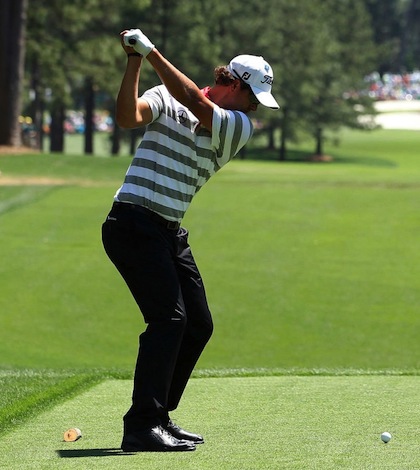
“I am trying to make a full turn.”
“I am trying to complete my back swing.”
I’ve heard these phrases come out of golfer’s mouths for 30 years, and didn’t care to know what they really meant… until I started teaching golf.
Some instructors say golfers should bring the club to parallel with their backswings, and others say that a 90-degree shoulder rotation is best (not to be confused with shoulders turning at a 90-degree angle to the spine). Then there are those who believe golfers should try to “turn their back to the target,” and ones who preach of getting the front shoulder over the back foot.
There are several problems with all of these tips, however, starting with the fact that parallel is a meaningless, arbitrary position that only has value in that it is symmetrical. And most people do not have the flexibility to make a 90-degree shoulder rotation, which again, is another symmetrical, although less arbitrary position. Falstaff would be selling these movements if he taught golf.
Now turning your back to the target seems meritorious, but it can cause a common, yet overlooked problem — the body over rotating and the spine losing its tilt away from the target or even tilting toward the target. I have come to call this reverse tilt, loss of tilt, or rotating out of tilt. It also involves the rear shoulder getting too close to the target.
This should not be confused with a reverse pivot, which usually happens immediately on the takeaway where the weight shifts to the front side, and then shifts to the back side on the downswing — the bane of beginners and very high handicappers. Reverse tilt, which begins fine but ends poorly, is an epidemic among mid to low handicappers, as many of them do it to some extent.
There are in fact people that can and should get the club past parallel and turn their shoulders past 90 degrees. It is almost a direct correlation between flexibility and ability to create speed for those that go to and past these arbitrary positions. Payne Stewart, John Daly and most of your world class long drivers are famous examples.
So again, the question begs, what is a full turn?
The answer is very individual. The simple answer for most golfers is that the back swing stops as soon as the shoulders reach their maximum rotation. Golfers should take care to make sure that the arms do not continue the swing when the shoulders reach that point of maximum rotation.
The exceptions are for people with the ability to create speed and/or link their arms up to their turn after they have run past. It’s not an ideal movement, and there are a very few who are successful at it, such as Fred Couples. It’s extremely hard to consistently separate the arms from the body during the turn/pivot and make consistent contact.
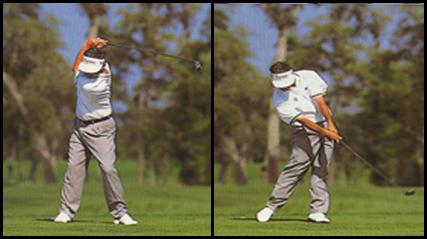
Masters champion Fred Couples has the ability to separate his arms from his turn and still make solid contact consistently.
Most golfers who over run their shoulder turn with their arm swing aren’t as skilled as Couples, which gives them a backswing that is too long. As a result, they can’t generate enough speed with their turn or their arms, so they end up with what I once heard described as, “A Southern Belle limp wristed throw” at the ball. I still don’t know exactly what that means, but it sounded pretty negative to me.
Here’s are true, technical answers to what a full turn really is:
- A full turn is created when the shoulders have reached their maximum turn at the proper angle (rotating at an angle perpendicular to the spine at address). This will be 50 degrees for some golfers, and in two-time World Long Drive Champion Jamie Sadlowski’s case, upwards of 120 degrees. Most golfers will be in the 70-to-90 degree range.
- A full turn occurs when the arm swing does not continue after the maximum shoulder rotation is achieved.
The above two issues are commonly known throughout the golf world and supported by most instructors. But there’s a third, more important answer, which is often overlooked by instructors.
3. Stay short of the point where the body can no longer sustain spine tilt away from the target. In a face on view, the rear shoulder does not rotate closer to the front foot than the rear foot.
Many high handicappers violate No. 2 and are told by all their friends, internet gurus, instructors, network announcers, their wives, kids, religious leaders, mailman and Pilates instructor. As a direct result of this “arm overrun”, they lose their lag, which for the Rip Van Winkles is the magic angle between the left arm and shaft (for right handed golfers).
I want to make it clear that no holding of the angle, float loading, ringing the bell or Marquis de Sade endorsed training aid is going to allow these golfers to keep their lag when they violate No. 2. They can’t create enough speed to sustain their lag because their overly long backswings just won’t allow it.
Yes, it’s true that a longer swing can create more speed and power for a select few, for most golfers it greatly reduces it. And since quality repetition is what creates good golf, redundancy from an instructor is not a sin and doesn’t put you in the third ring of Inferno. With redundancy being a virtue, I get to follow Beatrice into Paradiso.
The amazing thing is how many low handicappers, single digits and mini-tour level players violate No. 3 and don’t even know it’s a bad thing. Not only can many of them not sustain their lag and speed all the way to the ball because their arms don’t have the room to speed up, violating No. 3 tilts the spine toward the target, steepening the angle of attack. Most often, the body reacts by throwing the lag angle away to shallow out AoA (so a golfer doesn’t dig a grave with an iron or put an idiot mark on top of the driver). What makes it even worse is that experienced and high-level golfers know from a feel perspective they don’t want to hang back to recreate tilt at impact that all good players have with all clubs, so they end up moving the upper body laterally toward the target, exacerbating their problems.
Below are pictures that illustrate this point. Photo 1 is of one of my clients who is a low single digit, next to my “playing swing.” My client’s right shoulder has rotated all the way over to his front foot and he has not tilted away from the target. At first look, this back swing looks text book as the shoulder turn appears huge, there is no arm overrun and he is not past parallel. However, he has set himself in a place where his angle of attack is going to be too steep and he gradually will lose his lag angle and have no shaft lean at impact — the two main reasons he came to me for help.
Photos 2 and 3 are of my “long drive swing” that at 46 years old, I can still use at times produce club head speeds of more than 130 mph. You will notice how even in my swing that goes well past parallel, I still have spine tilt away from the target and my right shoulder has not gone across the midline of my body. That is a full turn.
Photo 1
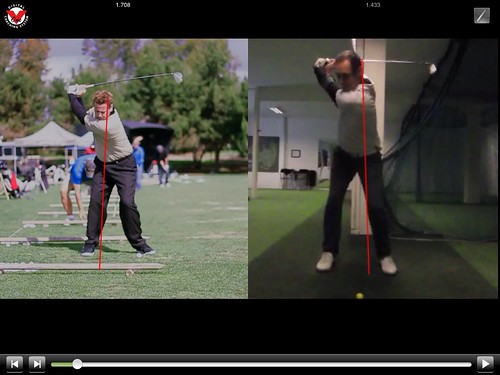
Photos 2 and 3


In the photo below, you will see the real X-factor on the right (not to be confused with the X-factor that caused millions of golfers to restrict their hip turn). My long drive swing with a vertical line from my right shoulder to the ground and one on my spine make a nice X. On the left, you will see a long hitting GolfWRXer who makes a huge turn, but has no X-factor. This is not a thinly veiled attempt to brag. As I prepare for the Remax World Long Drive Championships in two months, it’s evidence I am trying to practice what I preach.
I’ve also included photos of Tiger Woods and Ben Hogan below. In the photo, Tiger is working on a centered pivot, and you can see that Hogan went past parallel. But neither Tiger nor Hogan rotated the right shoulder past their mid-line, and both sustained their tilt away from the target in the backswing. They both have real X-factor.
So if you want to achieve your maximum power and efficiency — and for the lagists, maximum lag — you need to figure out what your full turn is. For nearly all of you, it is going to be a shorter swing that “feels powerless.”
Put a shaft across your chest and hold it cross-armed with the club head on the side of your back shoulder and stand in front of a mirror in a golf posture. Stretch to your maximum turn where your spine is still tilted away from the target and that clubhead is still closer to your back foot than your front foot. Now take the club, grip it and extend your hands away from your chest.
The key is not getting the front shoulder over the back foot — it’s getting a maximum turn while keeping the back shoulder over the back foot, or at least not across the middle of the stance. That is what sustains the tilt away from the target, gives your arms room to accelerate, produces the optimal angle of attack … and wait for it … sustains maximum lag and shaft lean through impact.
That is a full turn. For most of you, it will be a lot shorter than what you do.
- LIKE85
- LEGIT9
- WOW6
- LOL4
- IDHT4
- FLOP6
- OB4
- SHANK8
Instruction
The Wedge Guy: The easiest-to-learn golf basic

My golf learning began with this simple fact – if you don’t have a fundamentally sound hold on the golf club, it is practically impossible for your body to execute a fundamentally sound golf swing. I’m still a big believer that the golf swing is much easier to execute if you begin with the proper hold on the club.
As you might imagine, I come into contact with hundreds of golfers of all skill levels. And it is very rare to see a good player with a bad hold on the golf club. There are some exceptions, for sure, but they are very few and very far between, and they typically have beat so many balls with their poor grip that they’ve found a way to work around it.
The reality of biophysics is that the body moves only in certain ways – and the particulars of the way you hold the golf club can totally prevent a sound swing motion that allows the club to release properly through the impact zone. The wonderful thing is that anyone can learn how to put a fundamentally sound hold on the golf club, and you can practice it anywhere your hands are not otherwise engaged, like watching TV or just sitting and relaxing.
Whether you prefer an overlap, interlock or full-finger (not baseball!) grip on the club, the same fundamentals apply. Here are the major grip faults I see most often, in the order of the frequency:
Mis-aligned hands
By this I mean that the palms of the two hands are not parallel to each other. Too many golfers have a weak left hand and strong right, or vice versa. The easiest way to learn how to hold the club with your palms aligned properly is to grip a plain wooden ruler or yardstick. It forces the hands to align properly and shows you how that feels. If you grip and re-grip a yardstick several times, then grip a club, you’ll see that the learning curve is almost immediate.
The position of the grip in the upper/left hand
I also observe many golfers who have the butt of the grip too far into the heel pad of the upper hand (the left hand for right-handed players). It’s amazing how much easier it is to release the club through the ball if even 1/4-1/2″ of the butt is beyond the left heel pad. Try this yourself to see what I mean. Swing the club freely with just your left hand and notice the difference in its release from when you hold it at the end of the grip, versus gripping down even a half inch.
To help you really understand how this works, go to the range and hit shots with your five-iron gripped down a full inch to make the club the same length as your seven-iron. You will probably see an amazing shot shape difference, and likely not see as much distance loss as you would expect.
Too much lower (right) hand on the club
It seems like almost all golfers of 8-10 handicap or higher have the club too far into the palm of the lower hand, because that feels “good” if you are trying to control the path of the clubhead to the ball. But the golf swing is not an effort to hit at the ball – it is a swing of the club. The proper hold on the club has the grip underneath the pad at the base of the fingers. This will likely feel “weak” to you — like you cannot control the club like that. EXACTLY. You should not be trying to control the club with your lower/master hand.
Gripping too tightly
Nearly all golfers hold the club too tightly, which tenses up the forearms and prevents a proper release of the club through impact. In order for the club to move back and through properly, you must feel that the club is controlled by the last three fingers of the upper hand, and the middle two fingers of the lower hand. If you engage your thumbs and forefingers in “holding” the club, the result will almost always be a grip that is too tight. Try this for yourself. Hold the club in your upper hand only, and squeeze firmly with just the last three fingers, with the forefinger and thumb off the club entirely. You have good control, but your forearms are not tense. Then begin to squeeze down with your thumb and forefinger and observe the tensing of the entire forearm. This is the way we are made, so the key to preventing tenseness in the arms is to hold the club very lightly with the “pinchers” — the thumbs and forefingers.
So, those are what I believe are the four fundamentals of a good grip. Anyone can learn them in their home or office very quickly. There is no easier way to improve your ball striking consistency and add distance than giving more attention to the way you hold the golf club.
More from the Wedge Guy
- The Wedge Guy: Golf mastery begins with your wedge game
- The Wedge Guy: Why golf is 20 times harder than brain surgery
- The Wedge Guy: Musings on the golf ball rollback
- LIKE85
- LEGIT13
- WOW5
- LOL1
- IDHT0
- FLOP4
- OB1
- SHANK8
Instruction
Clement: Stop ripping off your swing with this drill!

Not the dreaded headcover under the armpit drill! As if your body is defective and can’t function by itself! Have you seen how incredible the human machine is with all the incredible feats of agility all kinds of athletes are accomplishing? You think your body is so defective (the good Lord is laughing his head off at you) that it needs a headcover tucked under the armpit so you can swing like T-Rex?
- LIKE0
- LEGIT2
- WOW2
- LOL0
- IDHT0
- FLOP0
- OB0
- SHANK2
Instruction
How a towel can fix your golf swing

This is a classic drill that has been used for decades. However, the world of marketed training aids has grown so much during that time that this simple practice has been virtually forgotten. Because why teach people how to play golf using everyday items when you can create and sell a product that reinforces the same thing? Nevertheless, I am here to give you helpful advice without running to the nearest Edwin Watts or adding something to your Amazon cart.
For the “scoring clubs,” having a solid connection between the arms and body during the swing, especially through impact, is paramount to creating long-lasting consistency. And keeping that connection throughout the swing helps rotate the shoulders more to generate more power to help you hit it farther. So, how does this drill work, and what will your game benefit from it? Well, let’s get into it.
Setup
You can use this for basic chip shots up to complete swings. I use this with every club in my bag, up to a 9 or 8-iron. It’s natural to create incrementally more separation between the arms and body as you progress up the set. So doing this with a high iron or a wood is not recommended.
While you set up to hit a ball, simply tuck the towel underneath both armpits. The length of the towel will determine how tight it will be across your chest but don’t make it so loose that it gets in the way of your vision. After both sides are tucked, make some focused swings, keeping both arms firmly connected to the body during the backswing and follow through. (Note: It’s normal to lose connection on your lead arm during your finishing pose.) When you’re ready, put a ball in the way of those swings and get to work.

Get a Better Shoulder Turn
Many of us struggle to have proper shoulder rotation in our golf swing, especially during long layoffs. Making a swing that is all arms and no shoulders is a surefire way to have less control with wedges and less distance with full swings. Notice how I can get in a similar-looking position in both 60° wedge photos. However, one is weak and uncontrollable, while the other is strong and connected. One allows me to use my larger muscles to create my swing, and one doesn’t. The follow-through is another critical point where having a good connection, as well as solid shoulder rotation, is a must. This drill is great for those who tend to have a “chicken wing” form in their lead arm, which happens when it becomes separated from the body through impact.
In full swings, getting your shoulders to rotate in your golf swing is a great way to reinforce proper weight distribution. If your swing is all arms, it’s much harder to get your weight to naturally shift to the inside part of your trail foot in the backswing. Sure, you could make the mistake of “sliding” to get weight on your back foot, but that doesn’t fix the issue. You must turn into your trial leg to generate power. Additionally, look at the difference in separation between my hands and my head in the 8-iron examples. The green picture has more separation and has my hands lower. This will help me lessen my angle of attack and make it easier to hit the inside part of the golf ball, rather than the over-the-top move that the other picture produces.


Stay Better Connected in the Backswing
When you don’t keep everything in your upper body working as one, getting to a good spot at the top of your swing is very hard to do. It would take impeccable timing along with great hand-eye coordination to hit quality shots with any sort of regularity if the arms are working separately from the body.
Notice in the red pictures of both my 60-degree wedge and 8-iron how high my hands are and the fact you can clearly see my shoulder through the gap in my arms. That has happened because the right arm, just above my elbow, has become totally disconnected from my body. That separation causes me to lift my hands as well as lose some of the extension in my left arm. This has been corrected in the green pictures by using this drill to reinforce that connection. It will also make you focus on keeping the lead arm close to your body as well. Because the moment either one loses that relationship, the towel falls.


Conclusion
I have been diligent this year in finding a few drills that target some of the issues that plague my golf game; either by simply forgetting fundamental things or by coming to terms with the faults that have bitten me my whole career. I have found that having a few drills to fall back on to reinforce certain feelings helps me find my game a little easier, and the “towel drill” is most definitely one of them.
- LIKE12
- LEGIT2
- WOW2
- LOL0
- IDHT0
- FLOP2
- OB0
- SHANK8
-

 19th Hole6 days ago
19th Hole6 days agoDave Portnoy places monstrous outright bet for the 2024 Masters
-

 19th Hole2 weeks ago
19th Hole2 weeks agoThings got heated at the Houston Open between Tony Finau and Alejandro Tosti. Here’s why
-

 19th Hole7 days ago
19th Hole7 days agoTiger Woods arrives at 2024 Masters equipped with a putter that may surprise you
-

 19th Hole2 weeks ago
19th Hole2 weeks agoReport: Tiger Woods has ‘eliminated sex’ in preparation for the 2024 Masters
-

 19th Hole1 day ago
19th Hole1 day agoTwo star names reportedly blanked Jon Rahm all week at the Masters
-

 19th Hole2 weeks ago
19th Hole2 weeks agoAddiction, spinal fusion, and scam artists – Everything Anthony Kim revealed in candid interview with David Feherty
-

 19th Hole2 weeks ago
19th Hole2 weeks agoAnthony Kim says doctors told him that he ‘may not have much time left’ ahead of LIV return
-
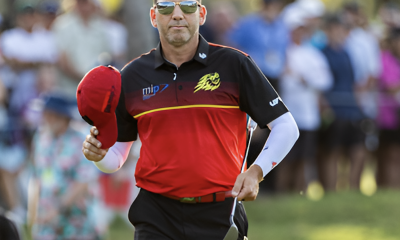
 19th Hole1 week ago
19th Hole1 week agoBrooks Koepka and Sergio Garcia make significant equipment changes as 2024 Masters looms

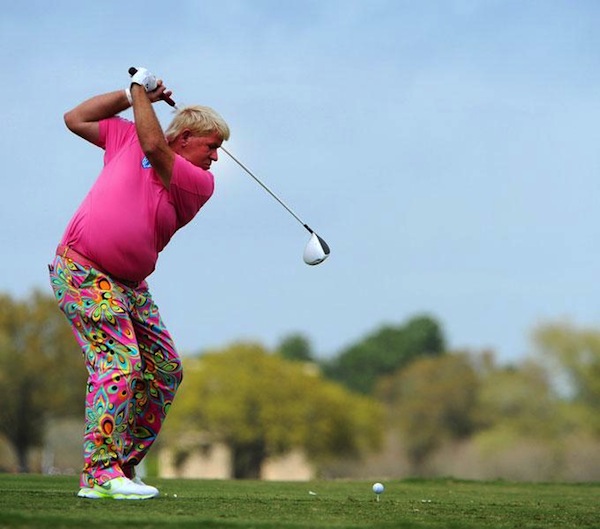
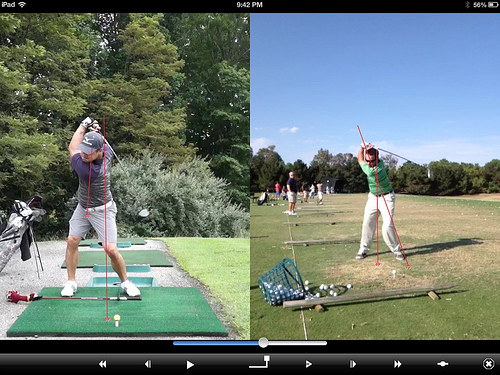
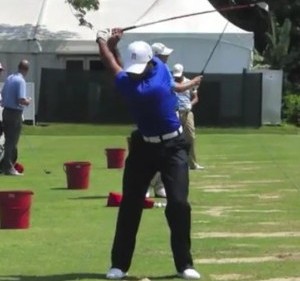
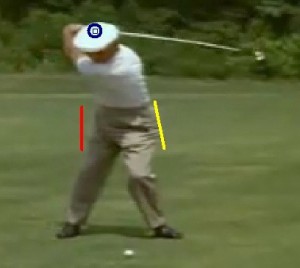

















garcinia cambogia extract
Dec 14, 2013 at 10:53 pm
We enjoy your site, hope you really don’t head that we shared
it on fb
mega
Oct 1, 2013 at 11:34 pm
This is exactly what I am working on with my instructor. In fact, everything else we have worked on has come fairly easy, this is not coming easy as I keep over swinging.
Jdish
Sep 18, 2013 at 11:58 pm
Possibly the best thing I’ve ever read about the golf swing. Seriously
Pingback: It bears reading again | Monte Scheinblum's Blog
???????????
Aug 18, 2013 at 8:25 pm
??????
Dan
Aug 6, 2013 at 9:22 pm
love the article. I will try to put these tips into my practice immediately
Brian
Aug 2, 2013 at 11:00 pm
You couldn’t be more wrong about some people having 50 degrees of shoulder turn while Sadlowski having 120 degrees or so. In grad school we measured anatomical rotation of the spine on all the golfers, gymnasts, and baseball players. while restricting the hips to get an accurate measurement of only spinal rotation (aka shoulder rotation, shoulder turn, etc.) from L5-T1 (17 vertebra in total) the highest total amount of rotation was 48 degrees and that was by 2 gymnasts. The golfers and baseball players on average had 42 degrees with the highest in both sports being 46 degrees. There are countless studies out there that back up this data and healthsouth did a study years ago in the same thing on the pga tour. It is anatomically IMPOSSIBLE without shatter the spine to turn 120 degrees.
RM
Aug 8, 2013 at 4:47 pm
I think the key in your response is “while restricting the hips to get an accurate measurement of only spinal rotation”. I don’t believe he is referring to the spinal rotation, but instead the shoulder rotation in relation to the feet. The rotation in the hips and knees would account for the rest, from what I would guess.
larrybud
Aug 19, 2021 at 3:24 pm
Monte doesn’t advocate restricting the hips, and in fact, he mentions that hip restriction is one of the flaws he sees the most in players coming to him.
Greg
Aug 2, 2013 at 8:45 pm
Makes sense, I read the whole thing and I completely agree. Ive thought of this myself, and it makes sense that if you get reverse spine tilt towards the target it will cause you to have to release early to square the club up. And I agree the divot will tell you a lot, if you don’t release early to create a shallower impact you’ll dig way to much.
Paddy
Aug 2, 2013 at 7:14 pm
Hey Monte,
Good stuff. Any articles/tips on ensuring that the arm swing doesn’t go “past” the full shoulder turn?
Thanks,
P
ANDREW
Aug 2, 2013 at 3:27 pm
Great read, that was well done.
Andreas
Aug 1, 2013 at 1:36 pm
Absolutely spot on, excellent article. This is the kind of advice you WONT get if you go to the ‘brand name’ instructors. Well done Monte
Richard
Aug 1, 2013 at 9:32 am
Tom, I have the same feeling. One thing is to hit balls in the driving range and other is to play. But I’m feeling that this really works. Monte is right, we amateurs do not have enough skills to turn and separate arms as pros do. But other important thing is that you have to get away from the temptation to compensate the “short backswing” swinging hard the hands and arms in the downswing. Just drop them and let the club do the job. Monte, please correct me if I’m wrong!
Tom
Aug 1, 2013 at 5:42 am
So this is why my 3/4 swing is more accurate and repeatable than my “full swing” and gains just as much distance? Now, if I can just talk myself away from the thought of, ” some is good, so more must be better!”
Great article Monte…thanks!
Tom McNamara
BigBoy
Jul 31, 2013 at 9:43 pm
brilliant article.
Derrick Brent
Jul 31, 2013 at 9:04 pm
Great article Monte. Preach, Rev. Monte — preach!
Richard
Jul 31, 2013 at 3:29 pm
I’m 54 and play golf since I was 12. It’s amazing how my top swing is short. I was a little disapointed, but hitting some balls evthing felt different. My question is if this repeatable in the course without feeling powerless.
Rob
Jul 31, 2013 at 4:40 pm
Richard –
This very issue was causing 99% of my ball striking problems; keeping the arms going after my shoulder turn stopped. It has taken many months to get it in my head that what I perceive as a “short back swing”, when viewed on video, is actually quite long, and the result is a powerful strike generally in the center of the face.
I feel your concern wondering whether on not one can convince themselves that what feels like a pitch shot back swing really will launch the ball that 185 yards you need on this shot.
My best advise: Practice it on the range, then trust it on the course!
Monte Scheinblum
Jul 31, 2013 at 4:49 pm
Once you get used to the new feel…FAR more repeatable than over rotating.
Pingback: Proof the golfing public has been brainwashed | Monte Scheinblum's Blog
mike
Jul 30, 2013 at 7:54 pm
hey monte, im having the same problem as your client in the first photo, where my right shoulder rotates to over to my front foot. What are some ways to fix this?
Cyd
Jul 31, 2013 at 11:36 am
From the Article
“you need to figure out what your full turn is. For nearly all of you, it is going to be a shorter swing that “feels powerless.”
Put a shaft across your chest and hold it cross-armed with the club head on the side of your back shoulder and stand in front of a mirror in a golf posture. Stretch to your maximum turn where your spine is still tilted away from the target and that clubhead is still closer to your back foot than your front foot. Now take the club, grip it and extend your hands away from your chest.”
Do this over and over. Practice it so you know the feel. Then practice getting to this position while performing the back swing in front of a mirror. Do it over and over and over and over again. Drill it home!
Monte Scheinblum
Jul 31, 2013 at 4:49 pm
What cyd said was helpful.
Also, hitting 1/2 wedges where you get a sense your right shoulder is over your right foot.
Rob
Jul 30, 2013 at 3:48 pm
Great article Monte! Very informative. Thanks!